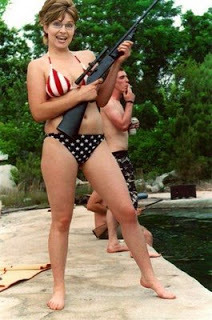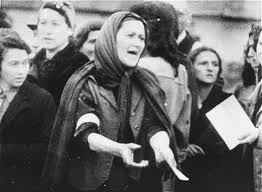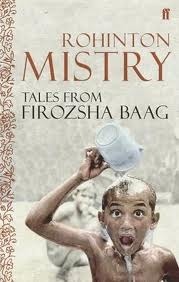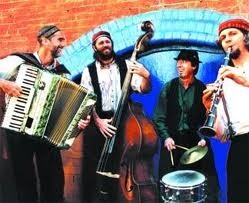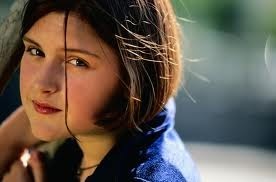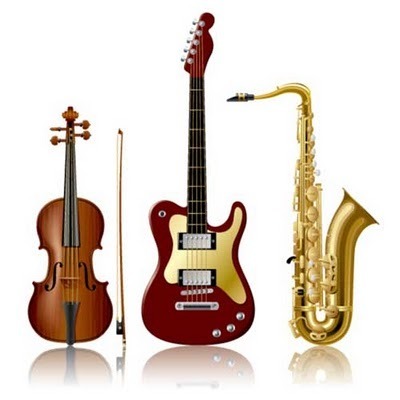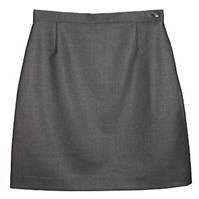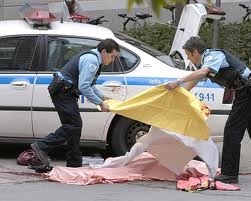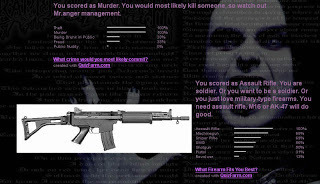Beverly Akerman's Blog, page 4
March 13, 2011
Sarah Palin: Moose Murder Barbie Steeps at Mega Tea Party

Faster than speeding bullsh*t, able to reach Russia in a single bound, makin' less sense than Donald "known unknown" Rumsfeld, it's Sarah Palin, the snowbilly Energizer Bunny of America's right wing: she's baaack!
And this time, she's partyin'—tea partyin' that is!
Our Sarah's been a real busy gal these past few weeks. First there was that book a hers, Goin' Rogue. Why shoot, when I heard the Queen a Texas Tea had writ herself a real, goldurn book, I wanted to shake her hand--after those early Katie Couric interviews, there were times I doubted she could even READ! But then she streaked past readin' and writin' to become a talking head on that station for the unfair and unbalanced, Fox "News." Truly, we live in a age of signs and portents--and that joyful phrase "President Palin" has me convinced the end times we all been prayin' for sure are plum nigh.
Sarah Barracuda's Alaska-to-household-name "common sense" story IS kind a miraculous: any of the women I know who had just given birth to a Down's Syndrome baby and discovered their 17-year-old daughter "with child" wouldn't a had a moment free to run for the White House, what with all the hysteria going on in their OWN houses. But—praise the Lord—when there's a job to do, NRA members and right-to-lifers charge right in where ordinary fools fear to tread!
But our Grandma Palin ain't no ordinary fool. She's a lipstick-wearer so on top of things as Governor, wife, and mother of five, that she popped right back to work a mere THREE DAYS after birthin' young Trig.
I, on the other hand, have yet to recover from my last pregnancy. And that was 15 years ago...
As governor, Palin roamed the legislature halls, skimming through messages with a BlackBerry in each hand. Well Lord sakes, what good thinkin', keeping your trigger fingers limber despite those long days at the office where you couldn't shoot nobody, much as you mighta wanted to. You betcha!
Me and the gals I know don't have no time to be exercisin' our Second Amendment rights (use it or lose it, girls!), what with all our worryin' over silly, everyday stuff--like how to get pregnant, how to keep from getting pregnant, how to keep our daughters from getting pregnant, how to find affordable/reliable/quality childcare/healthcare/eldercare, how to juggle our careers and family, how to keep a roof over our heads, how to keep said roof from leaking, and so on. Meantime, Sarah's doing The Nation's business and The Lord's Work, tryin' to get a handle on where Obama was really born, and getting the scoop on those Canadian death panels!
I guess me and my gal friends will always be handicapped by our small dreams because, as Sarah Palin, former beauty queen and one-time mayor of Wasilla, Alaska (pop. 10,256), has clearly shown, the best way to the top is over the top.
But wait--there's more!
You Sarah, inspire us--not just by bein' a whiz bang at shootin' fish in a barrel (or moose from small planes), but also in knowin' how to stick to your guns: despite young Bristol's unplanned, out-of-wedlock bumble of joy, apparently you (and Bristol) STILL champion high school sex ed that's abstinence-only. Well shoot, it's like your whole life is based on the teachin', "Don't confuse me with the facts! La la la!" You can't even be taught! Tarnation!
A better shot than Dick Cheney, more photogenic than any of the Joes, to this hard as nails moose dressin' little lady who resurrected the beehive and made the McCain campaign cough up a fabulous new wardrobe, I say: you go, girl!
All hail President Palin for 2012!
You are Dan Quayle without the gravitas, Hillary with none a that pesky, wrinkle-inducin' experience. As the capitalist economy, the fourth estate, critical thinking and them thar "educated classes" scatter before you like rose petals, you sure give us feminists faith in the future.
At least, in the future of comedy!
(Originally published by me on Open Salon, Feb. 8, 2010)
February 15, 2011
Not Your Bubby's Klezmer!
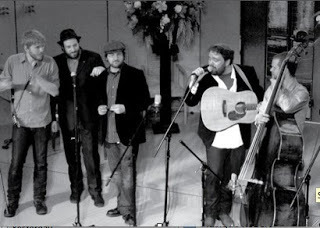
A few weeks back, I went to a concert at my synagogue, Dorshei Emet. It was Shabbat Shira—the Sabbath of song. My shul is reconstructionist, which means we're always on the lookout for something new to throw in the mix—hubby and I only half-jokingly call it Our Lady of Social Workers and University Professors. Our movement's tag line is "Judaism is the evolving civilization of the Jewish people," the keyword being "evolving."
(photo by Stephane Filion)
"The past has a vote, not a veto," is another of our other favourite slogans.
But I digress…
Getting back to the concert: despite being co-sponsored by Klez Canada, this wasn't your typical Jewish music event—nu, what do you expect from something billed "New Yiddish Cabaret and Old-Time Hebrew Hoedown"? It was more like la relève du Klezmer." Not your Bubby's Klezmer, that's for sure!
 In fact, hubby and I had our usual altercation when he discovered—15 minutes prior to leaving—that it was a Klezmer concert.
In fact, hubby and I had our usual altercation when he discovered—15 minutes prior to leaving—that it was a Klezmer concert.
"Alternative Klezmer," I hastily reassured him.
"But I hate Klezmer," my husband wailed.
"You do NOT hate Klezmer," I told him, a Phi Beta Kappa grad of the Jackie Mason school of Jewish wifery. "You just hated that terribly sad Klezmer concert we went to a few years back, music from the Warsaw ghetto. Or music for the Warsaw ghetto, or whatever it was. I forget."
"Music to kill yourself by," he said.
"I promise you're going to love this concert," I said (really, where do I get the nerve?)
"I hope you're right," he sighed, shrugging into his coat. And so on.
Anyway…we arrived at the synagogue and it was packed, PACKED! People swinging from the rafters…well, not really ("Are you kidding? Swinging from the rafters? You could get hoit doing such a t'ing! And in shul yet? Shame on you!")
In fact, the sanctuary was nearly as full as on erev Yom Kippur—which, for a shul, is pretty full, I don't need to tell you! And the audience—all ages, from babes in arms to geriatric cases--loved the show, if the standing ovations were anything to judge by.
But the approbation wasn't wholly (holy?) unanimous—in fact, part way through the inspired first song of the rousing first act—Adam Stotland and his J-men (my term, his musical friends being Jarrod Atkinson, Joe Grass, Jason Rosenblatt, and Joshua Zubot), the first song being "Gimme That Old Time Religion" —the older lady sitting beside me tapped my shoulder and crooked her finger at me. It was dark and I was pretty sure I didn't know her; I expected her to tell me how great the group was. Instead, I nearly plotzed when she said, in her Central European brogue, "Vut is dis, country music? Crazy! Dis is crazy, I tell you!"
Which only goes to prove there's no pleasing some people.
The program notes referred to Adam's "unique voice within the Jewish world… Klezmer, progressive rock…his own unique style of 'Jewgrass,'" (you can hear selections from Adam's new album, Maagal, on his website). Youthful, energetic, and freilach, in Hebrew, Yiddish, and English—it hit all the right "evolving civilization" notes.
Then there was the other headliner, Daniel Kahn. A poet. Need I say more? Yes, I need.
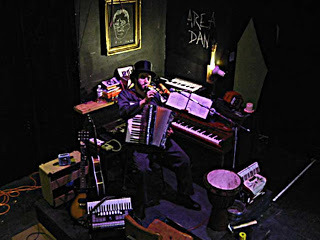 Originally from Detroit, currently from Berlin by way of New Orleans, Kahn is blurbed as a "multi-instrumentalist, singer, writer, poet, actor, director, composer, performer" who is "constantly reaching beyond boundaries, be they artistic, linguistic or geographic."
Originally from Detroit, currently from Berlin by way of New Orleans, Kahn is blurbed as a "multi-instrumentalist, singer, writer, poet, actor, director, composer, performer" who is "constantly reaching beyond boundaries, be they artistic, linguistic or geographic."
("Probably has to do all those things because he isn't very good at any of them."
"Will you please shut up?")
Clearly the fellow's an underachiever.
Also a thorn in the side. And I mean that in the best possible way, in a way the good Reb Kahn clearly intended. One of my early memories of Dorshei Emet's Rabbi, Ron Aigen, was at a meeting for potential new members, where Rabbi Ron announced he wasn't looking to make people feel cozy but to challenge them (I believe he said he wanted our shul, the Recon, as it's familiarly known, to be a place where we "afflict the comfortable and comfort the afflicted." I was actually looking for quite the opposite, at the time; clearly a man in some way similar to Dan Kahn).
One of my favourite moments of Kahn's set was when he asked if anyone in the audience "worked for a living?" Who among us were "workers," the class of person he wished to dedicate his next song to? The audience was struck dumb, sneaking glances at each other out of the corner of our eyes. We were doctors, accountants, developers, lawyers, university professors, administrators, professionals of all stripes…all of us thinking "does he mean me? He couldn't possibly mean me—I don't punch a clock, I am not unionized..." And so on. Thank God, some poor schmuck owned up to being a worker or we'd still be sitting there…)
Another highlight was Kahn's doozie of a song, Parasite ("Anybody in the audience a biologist?" he asked. Even though I am, and I know I was not alone, by this point everyone was afraid to answer…).
 Afflicting the comfortable…that's what he was up to, no doubt. Does he really think we are all parasites? I've yet to come up with a satisfactory answer. I was—and still am—profoundly uncomfortable at the thought. A master stroke from a master shit-disturber. A poet, indeed.
Afflicting the comfortable…that's what he was up to, no doubt. Does he really think we are all parasites? I've yet to come up with a satisfactory answer. I was—and still am—profoundly uncomfortable at the thought. A master stroke from a master shit-disturber. A poet, indeed.
On the way home, hubby agreed I had been right—he very much enjoyed the music. "But bluegrass music with Yiddish or Hebrew lyrics…do you really believe that's Jewish music? I don't," he said.
"Jewish music is whatever music Jewish people make, whatever they write or perform," I retorted, thinking something about this conversation seems really, REALLY familiar.
"So if a Jewish pianist plays Mozart, suddenly Mozart is Jewish music," he lobbed back.
"Well…" I said, "they played guitar, mandolin, violin, harmonica, double bass, piano, accordion, even something Dan Kahn called his 'jewtar.'"
"He sang Un canadien errant," hubby countered. "And if Nana Mouskouri sang Un canadien errant, that makes it Greek music?"
"This discussion is getting ridiculous," I said, spared the loss of the argument by a subsequent near-collision--quite a spot of luck, I thought.
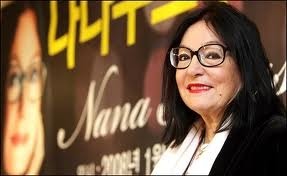 Later it hit me, the reason for this attack of déjà vu: because defining 'Jewish music' is like defining 'Canadian literature.' It's the same question as 'Is CanLit whatever Canadians write?' (Leaving aside the question 'what is literature?', of course.) You could ask it of any art, any jurisdiction.
Later it hit me, the reason for this attack of déjà vu: because defining 'Jewish music' is like defining 'Canadian literature.' It's the same question as 'Is CanLit whatever Canadians write?' (Leaving aside the question 'what is literature?', of course.) You could ask it of any art, any jurisdiction.
Now Rohinton Mistry writes wonderful books set in India, but he's a Canadian writer, isn't he? If Mistry set all his stories in India for the rest of his career—long may it be--does that make them any less Canadian? (Ironically, while pitching this story, The Rover's Critical 'I' editor, Bryan Demchinsky, told me he'd had the identical discussion some years back with Charles Foran—even down to the mention of Rohinton Mistry. Foran argued Mistry's work was not Canadian, I believe.)
Must Canadian literature conform to certain settings or themes, primary among the latter being "alienation, alienation, alienation," as one of our good friends put it a couple of decades ago? Must it be in certain prescribed languages—English, French, and Cree, for example? Is Farsi a no-go, CanLit-wise?
No, of course not.
Hubby—and perhaps that lady at the concert—were operating from what they knew of the history of Jewish music, not la relève de la musique Juive…the renewal of Jewish music. They were operating from the perspective of the past, not the future.
Why do we feel the need to classify things in this sort of narrow, parochial way? Jewish music, Canadian literature? Isn't it enough to recognize art when we see it, exclusive of national or ethnic borders?
The past has a vote but not a veto, I say…
The Shabbat Shira concert was a huge success (props to Eada Rubinger and her team), attended by people from inside as well as outside our shul community. It was also a fitting memorial to Shulamis Yelin, z'l, a fellow synagogue member and Montreal poet whose bequest has made our Shabbat Shira concerts an ongoing endeavour.
Well, it wasn't my Bubby's Klezmer, that's for sure. Or my Zaida's.
And what could be more Jewish than ending this discussion with a question?
Beverly Akerman is a Montreal writer; her first book, The Meaning of Children, was just published by Exile Editions.
This piece was originally published on The Rover.
February 9, 2011
Beverly Akerman's The Meaning of Children reviewed in The Globe & Mail
Here's the beginning of the article:

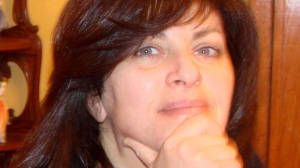 The Daily Review, Wed., Feb. 9 How children can save – or take – your life REVIEWED BY KATIE HEWITT From Wednesday's Globe and Mail
The Daily Review, Wed., Feb. 9 How children can save – or take – your life REVIEWED BY KATIE HEWITT From Wednesday's Globe and Mail Beverly Akerman's first vocation is genetics research. In her first book, The Meaning of Children, meaning tends to be somewhat scientific – usually externalized and observable, but not always revelatory.
Akerman follows children through the stages of adolescence, childbearing and the empty nest, occupying different decades, genders and narrative voices throughout 14 short stories. Disparate parts come together with recurring themes of sex, death, guilt and social prejudice.
This isn't the invented childhood of imagination and wonderment...
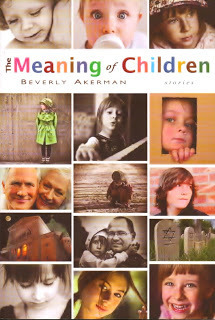
The Meaning of Children: Stories, by Beverly Akerman, Exile Editions, 226 pages, $19.95
It's quite a fantastic review:
...in The Mysteries, Akerman perfectly captures the anxiety of second-grader Rebecca after the birth of her little brother. Left to walk to school alone by her beleaguered mother, Rebecca meets a strange man who talks of hot chocolate and puppies. Her inner monologue runs wild wondering if the "don't talk to strangers" rule applies when the stranger talks first. ("Why don't they tell you what to do about moments like this when they tell you so much other stuff?")
Rebecca's innocence, her perception of the horror laced in her teacher's silences, and ultimately her fear and a slight exaggeration of events to the police leave the reader almost as confused as Rebecca about the man's intentions, all because Akerman writes as a believable eight-year-old.
Perhaps most compelling is Like Jeremy Irons. A mother "colonized" can only acknowledge her abortion in the third person, and painstakingly describes the procedure. The story defies the reader not to have a visceral reaction to her pain, her oscillation between a mother's guilt and a feminist's fierce resolve, and the sound of vacuum suction that's "found something to hold onto, some meaning.…"
But don't just take my word for it--you can read the whole thing here!
Just released by Exile Editions, The Meaning of Children is available through Amazon.ca and Chapters.Indigo.ca--coming soon to a store near you!
February 2, 2011
Beverly Akerman's The Meaning of Children released by Exile Editions

A version of the manuscript won the 2010 David Adams Richards Prize from the Writers' Federation of New Brunswick. Judge JoAnne Soper-Cook said the work shows
a keen, incisive vision into the hidden world of children as well as intimate knowledge of the secret spaces that exist between the everyday events of life. There is knowledge here, knowledge of those important, life defining moments of puberty, the birth of a sibling, an encounter with a possibly dangerous stranger. Overall, a work with a brilliant sense of story.
Individual stories have also won or placed in contests, including the Sheldon Currie Prize and Best New Writing 2011 (Editor's Choice Award). Here's a sampling of the feedback received from editors and judges on individual stories:
"Emotional and tightly written." David Bright, Gemini Magazine;
"Solid and very funny. Great stuff!" Karl Jirgens, Rampike;
"Oh, it's lovely. I like it when my body responds to writing; right now there's an ache in my throat." Susan Rendell, EarLit Shorts;
"The judges liked…the resistance to the happy ending, and the idea that there is often something or someone waiting for the small mistake." The Writers' Union of Canada, 2007 Short Prose Competition Jury
"I love the mystery and the fear in this story—the ending works so well." Colleen Donfield, The Sun;
"...beautifully unbearable..." Nancy Zafris, Flannery O'Connor Awards.
These fourteen stories approach the world's complexities through a child's eyes ('Beginning'), grapple with the sorrows and ecstasies of the child-bearing years ('Middle'), and probe truths that confer a child-like clarity near the end of life's journey ('End'). A girl discovers a fear of heights as her parents' marriage unravels; a thirty-something venture fund manager frets over his daughter's paternity; an orphan whose hands kill whatever they touch is accused of homophobia; a mother of two can only bear to consider abortion in the second person; the wife of a retirement-aged professor finds him unconscious near his computer…The Meaning of Children speaks to all of us who—though aware the world can be a very dark place—can't help but long for redemption.
About me:
After over two decades in molecular genetics research, I realized I'd been learning more and more about less and less. Skittish at the prospect of knowing everything about nothing, I turned, for solace, to writing. My first fiction collection The Meaning of Children, has just appeared, thanks to Exile Editions. My recent accolades include nominations for the Pushcart Prize (for fiction and nonfiction) and National Magazine Awards. My stories have been published in The Antigonish Review, Best New Writing 2011, The Binnacle, BluePrintReview, carte blanche, Cellstories.net, Cliterature, The Dalhousie Review, Descant, EarLit Shorts, Fictionaut, Fog City Review, Grain, Joyland.ca, The Nashwaak Review, The New Quarterly, On the Premises, Rampike, Red Wheelbarrow, Rio Grande Review, r.kv.r.y quarterly, The Vocabula Review, Windsor Review, myriad other lay publications and learned journals. It pleases me strangely to believe I'm the only Canadian fiction writer ever to have sequenced her own DNA.
January 26, 2011
The Case Against School Uniforms

A few years back, my then-high-school-attending son received a detention. Not for inappropriate language or behaviour, but solely because his shirt-tail was untucked. Although I allow some room in his narration of his universe for embellishment and even, at times, truth-twisting, I believed him on this one. And that is because, over the several years previous, I had become acquainted with the Uniformists.
My children all went to public schools, and their elementary and high schools promulgated strict dress codes. From the outset, I was never completely in favour of all this uniformity. Being a child of the 60s, I was required to wear a tunic for precisely one year, which was abandoned after it was "recognized" that this "stifled self-expression and creativity." I use quotation marks because the received wisdom in these Oh-Oh years is quite different – now, uniforms are supposed to "create an environment conducive to learning," a sense of "community among students," and, not least, a muting of the intense competitive consumerism that lurks among the bad memories of we who are now parents ourselves. Fair enough; the schools my children frequented were good schools, and they were fixed (fixated?) on uniforms. So I could hardly join these communities hoping to make them conform to my thinking. But that didn't mean I couldn't ask questions. And, with that detention fresh in my mind, the question became: How uniform is uniform enough? One of the schools insisted on a certain type of shoe, the other that white oxford-style shirts or t-shirts are no longer acceptable, only polo shirts, with the knit collars and the three buttons. There was always some newer affectation, for example that shirts be monogrammed with the school name/logo.
Our high school is blessed to have a devoted cadre of volunteers who organized and ran the uniform store, generating tens of thousands of dollars a year, all of which was spent on the kids. These monies provide many bits and pieces which are really the school board's sadly neglected responsibility (new musical instruments, a paint job more often than once every seven years, equipment for classrooms, computers, libraries, etc., etc.) and some true luxuries (lavish graduation exercises, an unbelievable number of academic prizes for graduates, international exchange trips). So uniforms also functioned as an invisible school fee, over and above the taxes that we all contributed. Fair enough, but maybe we should be more up-front about this. Maybe, too, we should organize to demand more money from our governments, or for better use of the existing funds from our school boards.
Another thing about these uniforms really bothered me -- their monochromicity. Why should our schools be sensory deprivation zones? Why white and grey? Why can't a shirt style be prescribed, but blue, pink or yellow versions be permitted as well, in addition to the white? I never used bleach before my kids entered school! And though it was a minor concern on balance, I regret the environmental degradation these white shirts necessitated.
The truth that surprised me most was that nearly every parent I spoke with felt blessed by uniforms: they were relieved to be delivered from daily arguments about appropriate dress, or from the need to replace each fashion fad their children Exhausted. School officials wanted the monogrammed shirts in part, it seemed, because many of the young women at high school routinely buy extremely tight, skimpy versions of the currently requisite button-down oxfords. No one ever adequately explained to me why, beyond colour and low-heel requirements, a particular brand of shoe was necessary.
Why can't we parents face head-on the challenges that uniforms are supposed to address? If we have a problem with the sluttish dress of some of our daughters, or the exorbitance of the latest trend in jeans, we should face these issues forthrightly, not cover them over with grey flannel! Buck up, I say! Learn to say "No, that is not appropriate dress for school." No further explanation is necessary. Our authority can be as arbitrary as "We are teaching you how to live up to society's expectations. When you are a responsible adult, you can chose to conform or not, but at least you will know how to dress like a middle class prig." If our kids will not obey our edicts concerning tattoos, body piercing or outlandish hair colour, are we really doing them any favours by abdicating our authority in favour of the school bureaucracy?
Finally, let me tell you about an unfortunate secret truth which lurks beneath the thrall of the Uniformists: it is the way it makes public schools and their students resemble, in the most superficial of ways, the exclusive private schools that pepper my Montreal neighbourhood. And that is a value that I do not share. We should be proud that our kids go to public schools, where all races, religions and socio-economic groups are represented and form a community, just like the real world to which they aspire. If there are improvements necessary in our schools to positively influence behaviour and comportment, let's make these changes deep ones, not as superficial as the clothes on their backs, or colour of their hair.
My kids love their schools. And I'm grateful for all the hard work put in by the decimated custodial staff, the devoted teachers, concerned administrators and dynamic parent volunteers. I know by the middle of high school, my son shouldn't be wandering about with his shirttail hanging out. But can you blame me if I wish the administration was more concerned with the originality of my kids' minds, and less concerned about the conventionality of their dress? In the final analysis, shouldn't their education be more about content, and less about form?
Bev Akerman was a research scientist when she wrote this; she is now a writer in Montreal. The Meaning of Children, her first short fiction collection, has just been published by Exile Editions.
(Versions of this essay were published in The Montreal Gazette, Maclean's Magazine, March 7, 2005, and in Cynthia A. Bily, (Ed.) Students' Rights. Introducing Issues With Opposing Viewpoints. Farmington Hills, MI: Greenhaven Press. 2009)
January 22, 2011
"U.S. gun lobbies: the inmates who run the asylum"
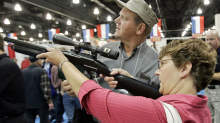
If you've spent even 30 seconds over over the past couple of weeks since the shooting of US Rep. Gabrielle Giffords ( who was just successfully moved to intensive care at Texas Medical Center) thinking about gun control, you owe it to yourself to read this fine article by Gerald Caplan in yesterday's Toronto Globe and Mail.
It's such a great piece, I wish I'd written it myself. Here are the first two paragraphs...
"Why is the United States so much more violent than Canada?
Canadians receive, even welcome, violence-based American mass culture pumped out 24/7 by the mammoth entertainment industry. Yet our society remains dramatically less violent than theirs. Take guns.
"The United States has by far the highest gun homicide rate in the industrialized world. In a study of 23 of these nations, the American rate was nearly 20 times higher than the others. Some 100,000 shootings take place in the U.S. every year, 30,000 of them fatal. In Canada, with about one-tenth the U.S. population, 190 people were killed by guns in 2006. More than a million Americans have died from gun violence, whether by murders, suicides or accidents, since Martin Luther King was gunned down in 1968."
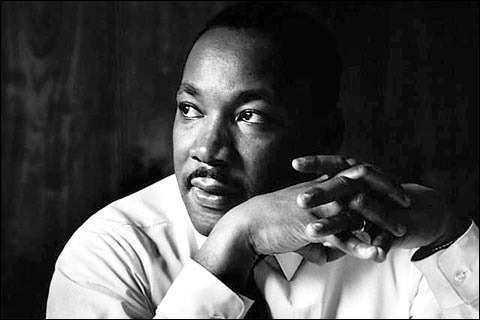
Caplan goes on to remind us that the NRA's annual budget is $307 million and represents some 4 million members. The pernicious effect of this group's power, according to Caplan:
"Here's the paradox you need to grasp about the NRA: Its ferocious opposition to any form of gun control is motivated precisely by the American orgy of gun violence. Because of this violence, it will maintain its relentless pressure for government to eliminate (except for children) literally every possible constraint on owning and carrying guns – and the deadlier the gun, better."
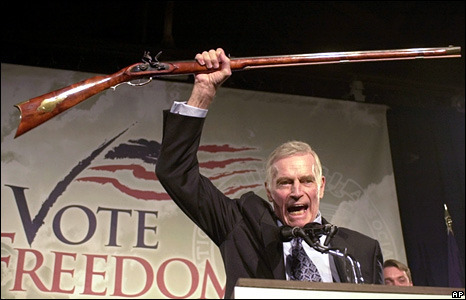
Gun violence in America: how can anyone believe that MORE guns make people safer? Aren't 300 million guns enough, if that strategy made any sense at all?
Perhaps this is all because the US public school system has failed to instill critical thinking in its students and graduates.
Or maybe it's the relentless marketing of violence and guns in the movies and other media, the 'product placement' most of us seem to ignore. Weapons are among the biggest of US--and world, especially permanent members of the UN Security Council--business.
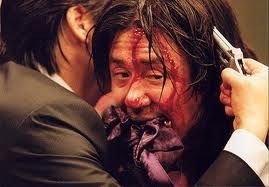
This is not just about the NRA...it's about the corruption of the political process.
---------

Gerry Caplan is a Canadian academic, public policy analyst, commentator and political activist. He has worked in academia, as a political organizer for the New Democratic Party, an education advocate, in broadcasting and African affairs and as a commentator in various Canadian media. He was educated at the University of Toronto and the School of Oriental and African Studies, University of London, which accorded him a doctorate in African history, according to Wikipedia.
----------------
Beverly Akerman is a Montreal writer; her first collection of short fiction, The Meaning of Children, will soon be released by Exile Editions.January 15, 2011
RIP Stephanie Hoddinott: Sad First Anniversary of Preventable Murder
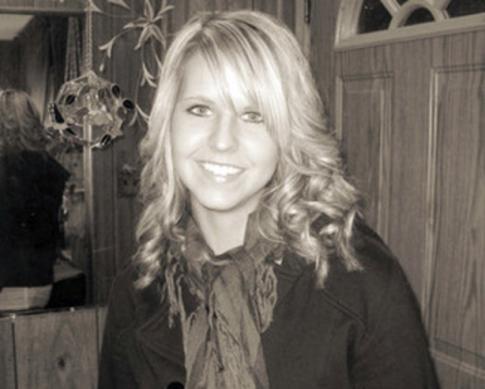
As part of an homage to those killed and injured recently in Tuscon, where Rep. Gabrielle Giffords still lies in intensive care, I've been re-running some of my previous gun control-related posts. This piece coincides with the tragic anniversary of the murder of Stephanie Hoddinott. This sad event occurred in Canada, a place with relatively stringent gun control, compared to the United States of gunhappy America. Still, our laws are clearly not stringent enough, as her disturbed, estranged boyfriend obtained a handgun for "target practice." Unfortunately, the target was Stephanie. And how much practice is necessary to shoot someone point blank, anyway?
Here is an revamped version of my piece, which originally appeared in The Toronto Star:

It's been just over a year since another senseless handgun-related murder, the case of Stephanie Hoddinott, a 20-year-old woman. Stephanie had a 4.0 GPA in her veterinarian technician program, was smart, beautiful, and well-loved. On January 10th, 2010, she was murdered in her home by an ex-boyfriend who had legally purchased a handgun—supposedly for target-shooting. The crime has understandably devasted her mother, Brenda Passa: "Stephanie wasn't just my daughter, she was my sister, and my best friend."
The young man, Jake Ferrier, shot himself in the head almost immediately afterward, lingering several days on life support before succumbing to his self-inflicted injuries.
In a letter to Mr. Harper, Ms. Passa wonders why we permit so many guns in our society, since the vast majority of Canadians are no longer required to hunt for subsistence.
What she finds hardest to understand is why, in her province, an 18-year-old isn't considered mature enough to legally buy a case of beer, but IS permitted to own a handgun.
It only takes one pull of the trigger to separate the law abiding citizen from the law breaking criminal, she says, pointing out that Canada's handgun restrictions haven't been updated since 1930.
Times have changed, she says: "Being 18 in 1930 is not like being 18 in 2010. Children live with their parents longer; they are younger emotionally and need time to develop before dangerous weapons" are made available.
She wants Canada's Prime Minister to change the age limits for gun ownership. And she wants target shooters to have their weapons confined to shooting ranges.

"I hope no one ever has to endure what I went through," she says.
On January 10th last year, Jake texted Stephanie repeatedly (he had texted her 40 times the day before). She didn't respond, so he showed up at Passa's house. Stephanie's mom met him at the door to say her daughter wouldn't see him.
He said, "Not even for two minutes?" and Ms. Passa told him, "No, not even for two minutes, Jake. I'm sorry, I can't make her." She shut the door.
"I liked him," Ms. Passa says.
She feels nobody who knew him would have predicted what happened next, insisting there had been no warning signs.
But, she notes, he certainly must have lied on the Possession and Acquisition License (PAL), the form that's completed and (supposedly) assessed before a person is permitted to buy a gun.
Ms. Passa says the PAL asks several significant questions. "Guess what?" she says, "the murderer lied on his application." Jake Ferrier's parents were in the midst of a divorce, and he had also recently broken up with Stephanie, facts the form asked for but Jake declined to note. "People are lying on these forms," she says.
Ms. Passa went to her daughter's room—Stephanie was packing for Toronto where she'd just started working at U of T (the University issued a heartfelt lament of her passing).
Stephanie had plans for her life: she wanted to attend vet school, and her mother supported her ambitions every step of the way.
On that fateful day last January, her mother asked if Jake had made any threats, but Stephanie said the problem was only his incessant texting. The two women finally decided Ms. Passa would call the young man's mother to discuss the situation. Ms. Passa decided she'd shower first.
And it was while she was in the shower that she heard two loud bangs.
By the time she threw on her pyjamas and ran to her daughter's room, Stephanie lay face down on the bed and Ms. Passa's boyfriend was speaking with 911.
She kept calling her daughter's name but there was no response. Turning the girl over revealed she'd been shot in the head. The 911 technician told Ms. Passa to start CPR. "I blew in her mouth--blood was coming out of her neck and the top of her head. My daughter died in my arms, to the sound of my screaming." The 911 crew arrived to find her covered in her daughter's blood.

Ms. Passa is clearly devastated. She has nightmares, she cries every day. She says she herself would legally be permitted to purchase a handgun immediately, asking, "Do you think I am in any state of mind to own a handgun?"
Ms. Passa intends to do everything in her power to toughen the gun laws. She is convinced keeping guns at shooting ranges would be workable and effective. "Fighting this is the only thing keeping my will to live, that's the only thing I have left now. Stephanie is not dying for nothing."
Prime Minister Harper, Ms. Passa wants to know, can you help her?
A Facebook page set up by Stephanie's cousin Tyler Hoddinott, "RIP Stephanie Hoddinott," has over amassed nearly 4,000 members.
January 11, 2011
Gun Control is Also a Women's Issue

The interesting thing about staring down a gun barrel is how small the hole is where the bullet comes out, yet what a big difference it would make in your social schedule.
~P.J. O'Rourke, Holidays from Hell, 1989
This post was originally published on another of my blogs on Oct. 9, 2009. I rerun it here in recognition of the tragic shootings in Arizona, where Rep. Gabrielle Giffords lies in intensive care, in a medically induced coma. The alleged shooter sounds Jared Loughren sounds, not to put too fine a point on it, like a nutbar. He wasn't acceptable to military recruiters, he was exiled from the classroom for his erratic speech and behaviour. But hey buddy, wanna buy a semiautomatic Glock with an extended magazine? No problem!
Who can't help but conclude that the ease of procuring guns--in the USA in general and Arizona in particular--is partly responsible for this incident, leaving 6 dead so far and 14 injured? There are some 300 million guns in the USA, a third of them handguns. One hundred million guns are in private hands, the highest level of gun ownership in the world. Is it any wonder it is also accompanied by the highest rate of firearm homicide of any industrialized country? Those who believe MORE guns would make the country safer are, you should pardon the expression, off their rockers.
Do you really think another person whipping a gun out in the midst of the Loughner melee would have resulted in FEWER casualties? Only in a Vin Diesel movie...
------------------------
Some 80 per cent of Canada's guns--numbering between 9 and 11 million, by various estimates--are owned by men, so perhaps by definition, gun control can be seen as a "woman's issue." And repeated polling shows a substantial majority of women support the gun registry, perhaps because we know that guns are often used to harm or intimidate women in the throes of domestic violence. Women around the world are at greatest risk of harm from their intimate partners—"the usual suspects" in such cases.
Fully 85 per cent of Canadian women who are murdered are killed by their spouse or partner, and most of those shot dead are killed with legally owned firearms. Despite pro-gun lobby bluster, this gun violence is not just an urban phenomenon — the rate of women killed with guns is higher in rural areas because rural people own more guns. And murder is just the tip of the domestic violence iceberg—for every woman killed, many more are injured or threatened. And these "domestic violence" incidents appear in the papers almost daily. Several recent examples:
Smith AB, July 30th: Ian Jeffrey Paget kills estranged wife Joan Hanson, her daughter and granddaughter, and then turns the rifle on himself at her rural home in northern Alberta.
Kitchener ON, August 11th: Nadia Gehl is shot in early February at a bus stop close to her home. Waterloo police finally apprehend three suspects: her husband and two of his friends.
Orangeville ON, September 13th: Police investigate a murder-suicide that left a mother of two and her estranged husband dead. Witnesses say 39-year-old Heidi Ferguson, shot in the chest, sought help at a neighbour's. As she lay dying, Ferguson reportedly cried, "I've been shot by my husband ... please help me." An avid hunter and gun collector, Hugh Ferguson turned the gun on himself after a standoff with police.
Winnipeg MB, September 17th: Police are called after a 19-year-old woman is allegedly assaulted and threatened with a firearm. The woman flees the house and calls police from another area residence.
Fort St. John BC, September 30th: A northeastern B.C. man is shot and killed by the RCMP after a five-day standoff that began when the 41-year-old farm resident pursued a van carrying his wife, an unspecified number of children and a friend, and shot out the front tires.
Since the gun registry was created, close to 23,000 firearms licenses have been refused or revoked because of safety concerns. We register our cars and our dogs--not to register our guns would be criminal. No matter what the gun lobby says, gun control works. Consider the following :
· Controls on rifles and shotguns were strengthened in 1991: that year 1441 Canadians were killed with guns. By 2005, such deaths dropped by almost half, to 818.
· The number of Canadian women murdered with guns fell from 85 in 1991 to 32 in 2005. But the number of women murdered by weapons other than firearms declined only slightly during the same period of time. Again, the effectiveness of gun control is inescapable.
My son was at Dawson College on September 13, 2006 when Kimveer Gill went on his murderous rampage. I will never understand why Mr. Gill had such easy access to such enormous firepower--the fact that he managed to kill "only" a single young woman was due to the fortuitous coincidental presence of two brave and well-trained police officers. (I say "only" because, of course, for her parents, family and friends, the murder of 18-year-old Anastasia De Sousa is no small loss.) Kimveer Gill didn't need those guns and he shouldn't have had them. Why should his right to feel "big and bad" have trumped Ms. De Sousa's, my son's, or anyone else's safety? And so I support more gun control, not less. Please don't let our Parliament send Bill C-391, the bill to dismantle the long-gun registry, to committee, the next step in the legislative process.

Though our Prime Minister may refuse to face it, rifles and shotguns are the firearms used most often to threaten women and children, and the weapons of choice in the murder of police officers. Look, for example, at the 4 Mounties killed in Mayerthorpe, AB. And the only charges levied in that case were against the gun providers, who were traceable only because of the gun registry! When Mr. Harper talks about law and order one day, and laxer gun control the next, I'm not sure whether to laugh or cry. Contact your MP on this issue. Don't let Mr. Harper play fast and loose with our children's lives.
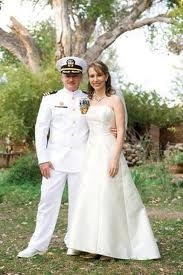
January 9, 2011
The Solution is Simple: No More Guns
I am the mother of a Dawson College student, was friendly with a beloved husband and father killed at Concordia University 14 years ago, and worked in a non-traditional occupation - molecular genetics research - when the Ecole Polytechnique massacre took place. My husband, Russell Copeman, is a provincial politician who spends much of the year at the National Assembly in Quebec City, where three were killed and 13 wounded by a deranged Canadian soldier in 1984. And so I feel myself uniquely placed to respond to the events of Sept. 13.
My response is not to launch a fruitless inquiry into the "root causes" of this catastrophic occurrence. I couldn't care a whit whether the perpetrator of last Wednesday's atrocities was refused academic admission to Dawson College, whether he was bullied as a child, either in school or at home. I think it's irrelevant if he grew up with a chip on his shoulder because of some imagined slight, or even if he or his family suffered in the past from some form of persecution, be it real or imagined, in Canada or elsewhere.
To me, there can be no mitigating factors for murder, whether the locus of attack is a college campus in downtown Montreal, a nightclub in Tel Aviv, a skyscraper in New York City, or some parched crossroads among the rubble of Afghanistan. Murder is murder is murder. Each one should fall under the rubric of "hate crime."
When 14 young Montrealers, full of hope, ambition and promise, had their lives snuffed out because they had earned the privilege of studying engineering while another could not, many people I knew, especially women, insisted the "root cause" of this crime was our society's oppression of women, an opinion at which I scoffed.
When gun control was trumpeted as the panacea to these horrible killings, I was skeptical. I bought the argument that gun control penalized the law-abiding, rather than the criminals. I was sensitive to the position that people living rural lifestyles needed firearms as part of their daily lives, a situation unimaginable to me, given my urban existence.
Well, I am skeptical and sensitive no more. Last Wednesday was the drop that made the glass overflow, as we say in Quebec. The balance has shifted. I realize more clearly now that my choice must be to care more for the potential victims than the potential perpetrators.
So that's my response to the Dawson killings: No more guns. It's as simple as that. Because no one can accurately predict who among us will become unhinged enough to explode in bloody slaughter, I believe that guns should be unavailable to the public.
I don't trust psychiatrists - much less gun-registry officials - to ferret out what lies deep in the hearts of men. After all, Concordia administrators, some of whom had equipped their own offices with locks and panic buttons because of Valery Fabrikant's continued harassment, consulted a psychiatrist about the demented professor before his murderous rampage. I saw the same psychiatrist on television last week, hovering in the background following the Dawson shootings.
According to journalist Morris Wolfe, the psychiatrist had deemed it "unlikely" that Fabrikant, a professor repeatedly denied tenure, would become violent (www.grubstreetbooks.ca /essays/fabrikant.html).
So if a trained psychiatrist with an abiding interest in severe and chronic psychotic illness, confronted with a man he himself has diagnosed as having "a personality disorder" cannot foresee the coming explosion of rage, all the administrative screening in the world won't be able to keep legal guns out of the hands of loonies. The solution that's clearest to me is to make guns - both legal and illegal - impossible to get.
And so, as a mother, a woman, and a sentient human being, I'm telling Prime Minister Stephen Harper and the entire government of Canada to wake up and smell the coffee: If you persist in your intended dismantling of the gun registry instead of making it harder for people to own guns, there will be hundreds of thousands of us marching in the streets of Montreal. I guarantee it.
January 8, 2011
When People We Know Kill Themselves
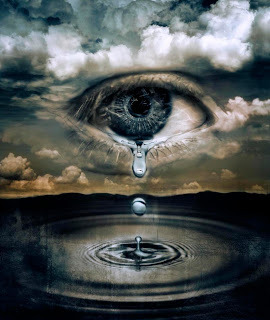
(My first commissioned professional article, Originally published in The National Review of Medicine issue of January 30, 2004. I reproduce it here because suicide remains an issue close to my heart. If you know of someone struggling with depression or suicide--or close to someone who is--please reach out. Concern and compassion work wonders. And godspeed to them. And to you.)
Eli Puterman is an engaging young man with a ready smile. Currently studying clinical psychology at the University of British Columbia, he was 22 when his partner committed suicide. Stephane was found in a field behind Eli's parents' home, clutching a photo of Eli. He expired in hospital of an overdose and hypothermia. Eli had just terminated their year-long relationship, several months after having found Stephane in their apartment, the veins of one arm slashed.
Although news to Eli, Stephane had made several previous suicide attempts In the aftermath of the suicide, no counselling was offered or suggested. Says Mr Puterman: "one of the doctors was the only [person] to acknowledge that I was the partner, the boyfriend. He was the only one who asked me how I was doing, put his arm around me to see if I was okay. And let me speak for a bit. I was destroyed for awhile. I was a zombie. I had a friend, a psychologist, who called me once a week to make sure that I was okay, to see if I had gone into therapy yet. Finally she said to me 'What are you waiting for?' It took about three months for me to get into therapy. I didn't want to. I kind of thought that I should, wasn't sure, felt I could cope on my own. Therapy was the best thing I ever did in my life, to reach out and talk about it."
GETTING HELP
Caroline Smart is a facilitator with the self-help group Family Survivors of Suicide (FSOS). Many of the people she encounters had no idea that their loved one was wrestling with death; half of suicides succeed on their first attempt. "I often recommend the Kubler-Ross book On Death and Dying to our survivors, because they go through the same sort of grief process dying people experience", she asserts, referring to shock and denial, anger, bargaining, depression, and acceptance. The double stigma of suicide and mental illness differentiates the grief of survivors, however. Some survivors experience guilt-tinged relief, liberated from the stress of caring for or coping with a mentally ill person.
After the first unsuccessful slashed wrist attempt, Eli had Stephane admitted to a local hospital. After three days he was discharged. What Eli interpreted as the system's callowness has plagued him ever since. "... they let him go. There was no follow-up interview. There was nothing! And I freaked out. I begged every single person in his life except for his family -- he didn't want his family -- to take him in, because I couldn't take care of him. And no one wanted to. Everyone had helped him already, they were tired of helping him".
HELPING OTHERS
Several years later, Eli was asked to facilitate a teen survivors group. He told them, "Many people feel guilty after somebody has killed themselves; they think 'I should have been the person who brought them to the hospital. I should have been the person who made sure they went to see a psychologist or a psychiatrist'. Everyone I know who has survived a suicide has tried to help the person who committed suicide. Everyone has tried to talk to them and to convince them to get help."
Systematic study of survivors is in its infancy; Dr. Gustavo Turecki of the McGill Group for Suicide Studies hopes to develop a centre to support families and treat pathological bereavement. His multi-disciplinary group focuses on genetics, molecular biology of the brains of suicide completers (e.g. dense microarray gene expression studies) and clinical studies (e.g. psychological autopsies, family studies). Currently, support for survivors is mostly provided by self-help groups such as FSOS.
Declares Caroline Smart: "We get people, sometimes, after 30 years; they have only just decided to talk." McGill's Social Work Faculty created the group in 1988, spurred by parent-survivors. It meets bi-weekly, from September to June. Catholic Family Services provides non-denominational referral backup, helping too with administration and planning. Survivors share their experiences, or simply listen. Self-expression, in many forms, is strongly encouraged. FSOS has semi-annual open meetings, and has organized other events, such as a vernissage of survivors' artworks.
Meeting those who have managed to continue meaningful lives following suicide is a great comfort to the newly bereaved: "It shows them they can go on, and go on to have good lives, too." Caroline, a survivor herself, notes that invited speakers suffer from a credibility problem unless they too are survivors. Often what clients need most is to tell their stories. "We are trying to get the word out . . . we do get referrals from a number of sources already but don't feel that our name is out there, the way it should be" she says.

